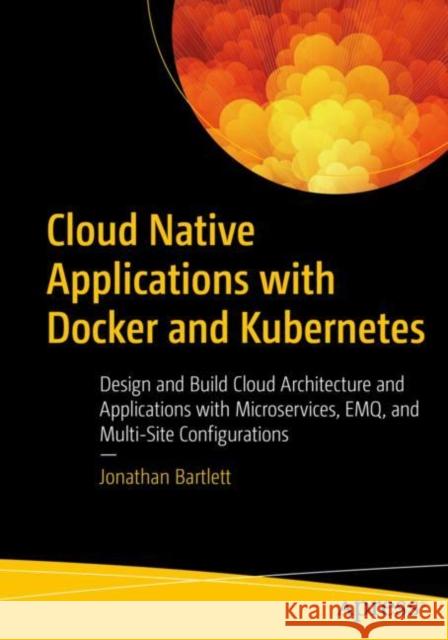Cloud Native Applications with Docker and Kubernetes: Design and Build Cloud Architecture and Applications with Microservices, EMQ, and Multi-Site Configurations » książka
Cloud Native Applications with Docker and Kubernetes: Design and Build Cloud Architecture and Applications with Microservices, EMQ, and Multi-Site Configurations
ISBN-13: 9781484288757 / Angielski / Miękka / 2022 / 273 str.
Cloud Native Applications with Docker and Kubernetes: Design and Build Cloud Architecture and Applications with Microservices, EMQ, and Multi-Site Configurations
ISBN-13: 9781484288757 / Angielski / Miękka / 2022 / 273 str.
(netto: 163,76 VAT: 5%)
Najniższa cena z 30 dni: 170,53
ok. 16-18 dni roboczych.
Darmowa dostawa!
This book takes developers on a journey into the cloud with Docker and Kubernetes. It walks you through the basics of Docker containers, how they are built, run, and published, and how the Kubernetes system allows you to use containers to better manage a cloud native application. Additionally, it walks you through various issues in cloud architecture, and how to design a cloud architecture that will work with your application and your team.The book takes a unique approach, getting you immersed in each subject with tutorials, then building up your technical knowledge, and finally backing up and thinking about more big-picture issues. Part one introduces Docker, building and working with Docker images, and covering best practices for Docker Containers. Part two covers the practicalities of "cloud native” and managing a Kubernetes application, including a full working example. The last part covers the design of cloud and microservice architectures, including the use of enterprise message queues, multi-site configurations and the common values that such architectures follow.This approach accelerates learning and keeps you moving forward without leaving you behind. The appendices also contain a wealth of worthwhile reference material for routine cloud application management.What You Will LearnUnderstand Docker and containerizationGain insight into what Kubernetes isMaster essential cloud architecture design principlesDesign and implement notes for building cloud architecturesWho This Book Is ForPrimarily developers who are moving to the cloud and want to get a sense of the environment they are getting into, and developers who want to move into a larger role of cloud architecture.
This book takes developers on a journey into the cloud with Docker and Kubernetes. It walks you through the basics of Docker containers, how they are built, run, and published, and how the Kubernetes system allows you to use containers to better manage a cloud native application. Additionally, it walks you through various issues in cloud architecture, and how to design a cloud architecture that will work with your application and your team.
- Understand Docker and containerization
- Gain insight into what Kubernetes is
- Master essential cloud architecture design principles
- Design and implement notes for building cloud architectures











